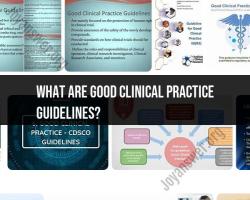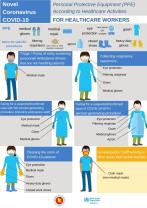What are the treatment options for nonprogressive dysarthria?
Nonprogressive dysarthria refers to a motor speech disorder that is not associated with a degenerative condition and does not worsen over time. Treatment for nonprogressive dysarthria often involves speech therapy aimed at improving speech intelligibility, articulation, and overall communication. Here are some therapeutic approaches and treatment options for nonprogressive dysarthria:
Speech and Language Therapy:
- Engage in regular speech and language therapy sessions with a licensed speech-language pathologist (SLP). A personalized treatment plan is essential based on the individual's specific speech characteristics and needs.
Articulation Exercises:
- Practice specific articulation exercises to improve the precision of speech sounds. These exercises may target tongue, lip, jaw, and velopharyngeal movements. Repetition and drills can help build muscle memory.
Strengthening Exercises:
- Incorporate exercises to strengthen the muscles used in speech production. This may include exercises for respiratory support, tongue strength, and lip control.
Breath Support Training:
- Focus on breath support and control during speech. Diaphragmatic breathing exercises can enhance respiratory strength and coordination, contributing to improved speech.
Rate Control:
- Work on controlling the rate of speech. Individuals with dysarthria may benefit from slowing down their rate to enhance clarity. Practice at a comfortable and controlled pace.
Voice Therapy:
- If dysarthria affects the voice, voice therapy may be beneficial. Techniques may include pitch control, loudness modulation, and resonance exercises.
AAC (Augmentative and Alternative Communication):
- Introduce augmentative and alternative communication systems if needed. These can include communication devices, symbols, or pictures to supplement verbal communication.
Visual and Tactile Cues:
- Utilize visual and tactile cues to assist with articulation. Mirrors can be used to provide visual feedback on mouth movements, and tactile cues can guide tongue and lip positioning.
Functional Communication Training:
- Focus on functional communication by practicing everyday phrases and situations that are relevant to the individual's needs and activities.
Group Therapy:
- Consider group therapy sessions for social interaction and communication practice. Group settings provide opportunities for individuals to communicate in various contexts.
Home Exercises and Carryover Activities:
- Assign home exercises and activities to reinforce skills learned in therapy. Regular practice outside of therapy sessions is crucial for the generalization of skills.
Task-Specific Training:
- Engage in task-specific training that involves practicing speech in real-life contexts. This helps improve carryover and the application of skills in everyday situations.
Ongoing Monitoring and Adjustments:
- Regularly monitor progress and adjust the treatment plan as needed. Dysarthria may change over time, and therapy goals may need to be modified accordingly.
It's important to note that the specific treatment plan should be tailored to the individual's unique needs, the type of dysarthria, and the underlying causes. Speech therapy for nonprogressive dysarthria is typically a dynamic and evolving process, and the involvement of a skilled speech-language pathologist is crucial for effective intervention.
What treatment choices are available for nonprogressive dysarthria?
Nonprogressive dysarthria, resulting from non-worsening neurological damage, offers various treatment options to improve speech clarity and communication abilities. Choosing the most effective approach depends on the individual's specific needs, the underlying cause of the dysarthria, and the severity of the symptoms.
Here are some of the available treatment choices:
Speech Therapy:
- Articulation Therapy: Targets improving the production of individual sounds or syllables through specific exercises and techniques.
- Prosody Therapy: Aims to improve speech rhythm, intonation, and stress patterns for better speech intelligibility and naturalness.
- Oral Motor Therapy: Focuses on strengthening and improving the coordination of muscles in the face, mouth, and throat for clearer speech production.
- Respiratory Therapy: Helps develop better breath support and control for more sustained and effortless speaking.
- Cognitive-Linguistic Therapy: Addresses any cognitive or language deficits that may be contributing to the speech difficulties.
Augmentative and Alternative Communication (AAC):
- Low-tech tools: Picture boards, communication charts, and other simple tools can supplement speech and enhance communication abilities.
- High-tech tools: Speech-generating devices can provide a voice for individuals with severe dysarthria who have difficulty speaking verbally.
Other Treatment Options:
- Biofeedback: Provides visual or auditory feedback on muscle activity to help individuals improve their control over speech production.
- Electrical stimulation: May be used in some cases to stimulate weakened muscles and improve speech clarity.
- Pharmacological interventions: In some cases, medication may be used to manage specific symptoms such as tremor or spasticity.
Additionally, several complementary therapies can support the treatment process:
- Music therapy: Can help improve rhythm, intonation, and coordination.
- Massage therapy: Can help relax facial and neck muscles, improving speech production.
- Yoga or meditation: Can help reduce anxiety and improve stress management, which can benefit speech communication.
It's important to note that a combination of different treatment approaches is often most effective in managing nonprogressive dysarthria. The specific treatment plan should be developed by a qualified speech-language pathologist in collaboration with the individual and their family.
Here are some resources for further information:
- American Speech-Language-Hearing Association (ASHA): https://www.asha.org/
- National Institute on Deafness and Other Communication Disorders (NIDCD): https://www.nidcd.nih.gov/health/voice-speech-and-language
- Dysarthria Coalition: https://theadultspeechtherapyworkbook.com/dysarthria-exercises-for-adults/
By exploring various treatment options and seeking professional guidance, individuals with nonprogressive dysarthria can achieve significant improvement in their communication skills and enhance their quality of life.













